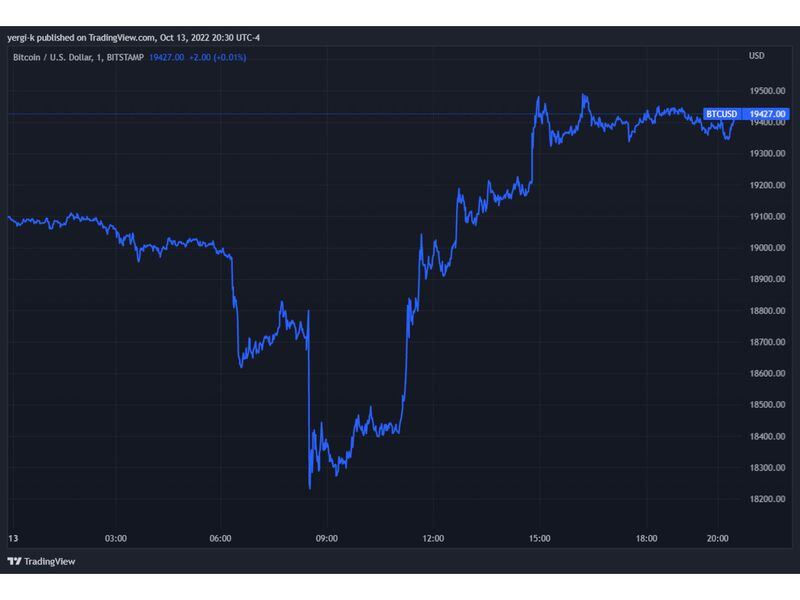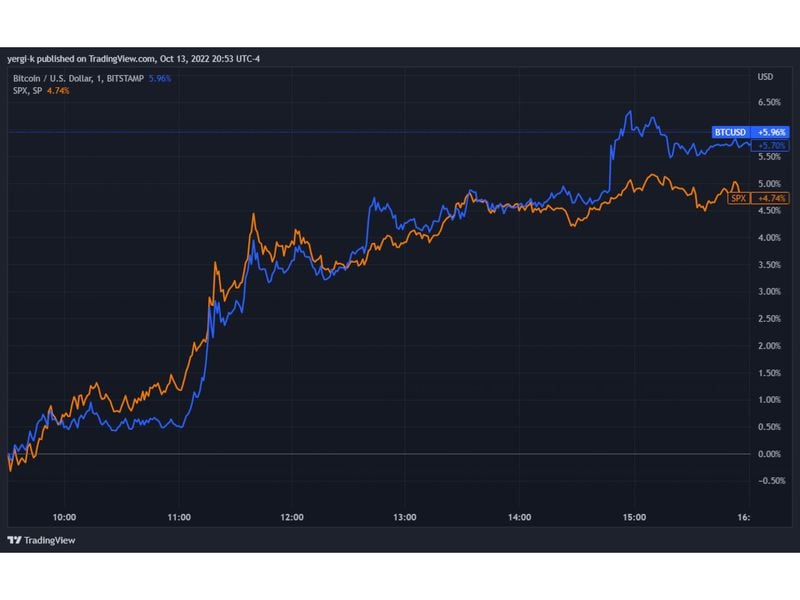Bitcoin and Stocks Took a Gut Punch; the Builders Hardly Noticed

Surprise, surprise, inflation is still lurking about. The Consumer Price Index (CPI) report was released Thursday. The CPI – which tracks the general price of goods across the U.S. – rose 8.2% in September from the same month a year ago, above the forecasted 8.1%.
CoinDesk U.S. markets reporter Helene Braun added good color Thursday morning, writing: “The ‘core’ CPI, which strips out volatile energy and food prices and is more closely watched by investors and policymakers because it’s seen as a more steady indicator of underlying price pressures, rose 0.6%.”
You’re reading Crypto Long & Short, our weekly newsletter featuring insights, news and analysis for the professional investor. Sign up here to get it in your inbox every Sunday.
Let's pause quickly – so now we have two CPI numbers. One CPI number – the CPI – is the CPI number: the change in the price of consumer goods. The other CPI number – the core CPI – is the pro forma, adjusted CPI number: the change in the price of consumer goods if we don’t include the price of things that are sometimes volatile, but not that important.
Except.
That’s things like food and energy. Arguably the most important things in general. From that same Helene Braun article: “Health insurance, for example, was up 28% year over year, which is the largest increase ever. Similarly, groceries were 13% more expensive than a year ago and rent prices surged 7.2%, the highest in four decades.” (emphasis added)
So health care (well, insurance, so not a perfect equivalence but good enough), food and rent are all more expensive in the U.S. (the highest in 40 years), but inflation is not that bad if you squint your eyes and tilt your head a little bit. C’est la vie.
According to a statement from the Biden administration: “Today’s report shows some progress in the fight against higher prices, even as we have more work to do. Inflation over the last three months has averaged 2%, at an annualized rate.” Putting political grandstanding aside, what did the market have to say in response to the CPI news?
Well, right at 12:30 UTC (8:30 a.m. ET), when the CPI report was released, the price of bitcoin (BTC) fell 4%. It had also faltered some 1% around 10:15 UTC (6:15 a.m. ET) in anticipation of the CPI report. Then bitcoin spent the remainder of the day grinding up to $19,410 by 8:30 p.m. ET, up 2.3% over 12 hours.

We’ve seen this before. When Federal Reserve Chair Jerome Powell announced a 50 basis point (in total, 0.5%) increase in the federal funds rate, we saw bitcoin, the U.S. dollar, the Nasdaq 100, U.S. Treasury yields, the S&P 500 and gold (so basically everything) immediately move aggressively up or down and then just as aggressively move back the opposite direction down or up.
Somehow, the S&P 500 proved not to be immune to the noise again and did the same thing as bitcoin. The S&P 500 started the day down and then rallied to end the day up 4.7%. Stocks are starting to look as volatile as bitcoin these days. Checkmate, Janet Yellen.

Instead of diving deep into why this happened, I'm going to leave you with one very good tweet from Sam Ro, who writes the TKer newsletter:
“stocks fell as hot CPI report implied tighter monetary policy, then rallied amid prospects that too tight monetary policy will cause a downturn that would prompt loose monetary policy”
Yes.
Read more: Why Did Crypto Surge After Bad Inflation News?
Meanwhile, in Atlanta …
While this was happening on Thursday, I was in downtown Atlanta at the Georgia World Congress Center at TABConf, a developer-focused Bitcoin conference. I was sitting in a workshop titled “Attacking Lightning,” parsing what was going on in the markets. Meanwhile, no one else in the room seemed to care. It’s unclear if they even knew the market was doing whatever it was doing.
And these weren’t casual bitcoiners – in general, these people work full time or are vying to work full time on Bitcoin. But that’s precisely the point central to this ideal: Builders will keep building no matter what. Instead of waxing poetic about why the price of bitcoin “doesn’t matter,” with conference goers we spent time trying to break bitcoin’s commerce layer in the Lightning Network (which we did), listening to Hannah Rosenberg talk through how Taro works and playing a game with Jeremy Rubin using bitcoin smart contracts after Keagan McClelland and Cara Ponzini taught attendees about Judica.
I think this matters a great deal, and I’m certainly not alone in echoing the following sentiment. Amid poor price performance of bitcoin, there’s not much for everyone to be excited about. There’s no fear of missing out on untold riches. There aren’t many Bitcoin Tourists here right now. A lot of people will say, “Bear markets are for building.” And so many people say it so often that it loses its meaning.
But I’m still going to say it again here because it’s important: Builders will keep building no matter what. Here’s why it particularly matters right now. We’ve already seen over $700 million stolen from decentralized finance (DeFi) hacks in October, and while the Bitcoin protocol hasn’t been hacked (nor am I implying that’s even possible), there’s certainly less attention on Bitcoin than there was when the price of bitcoin (the currency) was over $68,000.
So while the rest of the world is not paying attention, the developers who work on Bitcoin every day are spending time breaking things so that they can fix things to make Bitcoin even stronger. That’s a good thing for Bitcoin’s future, and anyone who thinks Bitcoin might have a chance at long-term viability should thank their lucky stars that the bear market is giving the builders time to build.








